You’re not the only one who isn’t sure how to pronounce Touareg. Yup, even though Volkswagen's full-size SUV has been around since 2002, it seems nobody really knows how to say its name.
The Germans at Volkswagen think it’s To-a-reg, while Australian interpretations range from ‘Tawreg’ to Toerag’.
Appropriate then, that our first drive of the new-generation Touareg took place in the land from which it drew its name – Morocco, where the Tuareg nomadic tribe still lives.
Yes, in this epic first drive, that saw us cover 1300km in four days through the Sahara and Atlas Mountains, we ate, worked and sometimes slept in our Touaregs – the 210TDI version. I feel I know this car well now, and even though the full details of Australian versions are yet to be released I can give you a good heads-up on what to expect.
But first, how do the Moroccans say it? Well the locals I spoke to said Tuareg (as in the tribe) is pronounced ‘Twah-reg’ and when I asked how they would say Touareg, I got confused looks – seems they don’t know either. It's a made-up name, after all. So say it however you like.
Volkswagen Touareg 2019: 150 TDI Monochrome
| Engine Type | Diesel Turbo V6, 3.0L |
|---|---|
| Fuel Type | Diesel |
| Fuel Efficiency | 7.2L/100km (combined) |
| Seating | 5 |
| Price From | $33,550 - $39,930 |
Is there anything interesting about its design?
8 / 10
The Touareg has finally been given the latest Volkswagen body styling, with an ultra-modern cockpit and it's built on the same VW Group 'MLB' platform as its cousins the Lamborghini Urus, Porsche Cayenne, Audi Q7 and Bentley Bentayga.
Like a jumbo version of the Tiguan the Touareg wears the current Volkswagen family face with that giant grinning grille that sweeps into the headlights, the broad bonnet with its nostril-like pressings, and the sharp creases which run the length of the SUV.
_0.jpg)
The Touareg is arguably more beautiful from behind than front-on. I’ve been staring at the back of a Touareg for four days and 1300km and I’ve think its rear end has the most elegantly minimalist styling of any large SUV out there.
The spacing of T O U A R E G across the tailgate has hints of Porsche’s own confidence-oozing typography and thee tail-lights look perfectly proportioned and sleek.
.jpg)
That minimalist design extends into the cabin with a tall dash ruled by horizontal lines accentuating its width. Our car was fitted with the optional 'Innovision Package' which adds an integrated 15.0-inch display for nav and media and a virtual instrument cluster. The complete effect is half the dash is a giant screen, and at night it's stunning.
The light of day has a way of making things look a little less attractive and the join line where the screens don’t perfectly meet up can be seen. That’s being pretty harsh, though.
.jpg)
Having sat in the passenger seat for half of the trip I noticed the giant screen is orientated towards the driver and aside from making me feel a bit left out, it also appeared the passenger side of the centre console where I sat was smaller than the driver’s.
When it comes to Australia, I’ll be getting my tape measure out to find see if it’s just an optical illusion or if feeling like I was riding in a side car was justified.
Talking of measurements, the dimensions of the Touareg have changed. At 4878mm in length the new generation car is 83mm longer than before, and while it’s wider in the body it’s 15mm narrower overall at 2193mm from one wing mirror to the other. At 1702mm tall the new car is 7.0mm shorter in height than the last-gen Touareg.
Does it represent good value for the price? What features does it come with?
8 / 10
Pricing and specifications for the new-gen Touareg are yet to be announced, but you can expect a list price upwards of about $80K depending on the grade you choose.
Volkswagen says it’ll kick things off with a launch edition in mid-2019, and that it will be a 190TDI. Then, by the end of 2019 we’ll see the arrival of two more grades – the 170TDI and 210TDI.
You can expect 19-inch wheels to be standard on the 170TDI, along with features such as LED headlights, a 9.2-inch touchscreen with the 'Discover Pro' media system with gesture control and sat nav, Apple CarPlay and Android Auto, eight-speaker 80-watt sound system, proximity key, dual-zone climate control and auto parking.
You can expect a high level of advanced safety equipment to come standard on the 170TDI, too, including adaptive cruise control. You can read more about these features in the section on safety below.
Stepping up to the 210TDI buyers can expect to gain 20-inch wheels, heated and power adjustable front seats and a power tailgate.
Our test car on this first drive was fitted with options galore, many of which we’ll be able to get in Australia, such as the Innovision Package which adds that 15-inch screen for nav and media, a virtual instrument cluster and a head-up display. Also optional is four-wheel steering (which our car had), air suspension and four-zone climate control.
.jpg)
You’ll also be able to upgrade from the standard 80-watt eight-speaker stereo to the optional 730-watt 14-speaker Dynaudio sound system.
The launch edition is expected to start above $80,000, and while Volkswagen won’t yet reveal what special features it’s likely to have, going by launch editions for other Volkswagen models it will probably include larger wheels than the base grade (20-inch), along with items such as tinted windows, wireless charging and chrome highlights.
The car I tested on my first drive in Morocco was a German-registered 210TDI fitted with the Innovision Package, panoramic sunroof and the 'R-Line Package' which adds leather R-Line sports seats and a tough-looking body kit, among other stylish elements.
.jpg)
Think a starting price of about $80K is too much? Well, it undercuts BMW’s X5, Mercedes-Benz’s GLE and Volvo’s XC90. And remember it sits on the same platform as the Lambo Urus, Bentley Bentayga, Porsche Cayenne and Audi Q7, but costs a lot less.
What are the key stats for the engine and transmission?
8 / 10
The new generation Touareg will arrive in Australia by about mid-2019 with a 190kW/550Nm turbo-diesel V6 engine. Before the end of 2019 170kW/500Nm and 210kW/600Nm turbo-diesel V6s will follow.
There is the possibility a twin-turbo V8 diesel could be offered, and Volkswagen is still to confirm if a petrol engine will be included in the line-up.
The test car on this first drive had the 210kW engine which performed well whether we were climbing a giant sand dune, bombing down a highway on a desert plain or weaving through city traffic.
There is a smidge of turbo lag, which is frustrating at times. The transmission is also keen to shift up to higher gears (even in Sport mode) occasionally leaving you bogged down in lower revs just when you want to power out of a corner.
.jpg)
The solution is to place the transmission in manual mode and use the shifting paddles so it will hold the desired gear.
That said, the ZF-souced eight-speed automatic transmission that comes in every Touareg is second to none for smoothness. It suits the big, flying limo feel of this SUV perfectly.
The Touareg is all-wheel drive with modes for Sport, Off-road (including Sand and Snow settings), and Normal driving.
All Touaregs have a braked towing capacity of 3500kg.
What's it like to drive?
9 / 10
I climbed out of the Touareg after four days and 1300km of driving from Marrakesh in Morocco to Erg Chebbi in the Sahara Desert in the country’s far east near the Algerian border and back again via the Atlas Mountains.
As far as first drives of new cars go, this one was epic and unusual, made possible after being invited by Volkswagen to attend its Driving Experience program which takes customers from around the world to Morocco for an off-road adventure.
The place names are foreign but the roads in some cases were surprisingly similar to those in Australia with course-chip bitumen, dirt and gravel being common. The style of driving, though, from the locals was completely alien, with road rules being more a suggestion as trucks, buses, cars, motorcycles and donkeys all chaotically fought for space.
.jpg)
The Touareg felt like a fortress on wheels – high enough to help me see over most of the mayhem, big enough to deter that pesky van from trying to cut in front of me, and with plenty of grunt to overtake and move quickly around that incredibly overloaded truck before the fast approaching traffic was on us.
And it did it all while sweeping us along in comfort and silence. The cabin is so well insulated the diesel engine couldn’t be heard at all. There were times when I wondered if the engine was running.
.jpg)
Our car had the optional air suspension fitted which kept the ride soft and compliant, but still with hardly a hint of body role in corners or bounce over bumps.
All-terrain tyres (235/60 R18 General Grabbers) were also fitted to our car. We’re not going to be able to get these as standard in Australia – we’ll have larger wheels (beginning at 19-inches), with much lower profile tyres, which is a bit of shame, because I reckon the knobbly, chunky rubber looked great on the Touareg and performed well on all surfaces.
.jpg)
If Volkswagen was to do a limited edition offering the same wheel and tyre package, I’d recommend it if you’re planning to regularly hit dirt and gravel roads, where they performed superbly while offering a quiet and comfortable ride on sealed roads.
We spent a day driving on dunes in the Sahara. It sounds exotic but proved to me that if you wanted you could take a Touareg to the Great Sandy Desert or the Simpson.
Deflate the all-terrain tyres to 1.0PSI, twist the driving mode dial to Off-Road, punch the Sand setting on the display screen, lift the ride height to the second highest air suspension setting (there are two high levels), turn the ESC off, knock the shifter across into manual mode, keep it in first gear and away you go.
Following the leader, our eight-car convoy slowly pawed its way over the dunes from our camp in Erg Chebbi to Merzouga, it was only 65km but it would take all day.
.jpg)
The Touaregs felt unstoppable, even when they were bogged, which happened once to me, but I was able to reverse and wriggle free.
It happened on the way up to the highest dune we’d scale, the one where we had to hit 60km/h and snatch second gear and power all the way up. Come off the accelerator and you’ll lose momentum and revs… that’s what I did.
Second time around I came up so quickly my co-driver was convinced we got air.
To get down the other side ESC was reactivated allowing hill descent control to work automatically and keep our progress from going all kinds of wrong.
By the end of the day the only sand which had found its way into the car came courtesy of our shoes, not through the air vents, doors or window seals.
.jpg)
On day three the highway from Merzouga to the Todra Gorge and onto Boumalne du Dades could have been in Outback Australia with its endless rocky plains, red dirt and course-chip bitumen.
Road noise and the gurgle of the turbo-diesel V6 were distant, faint sounds as we cruised at 100km/h, floating but also planted on that air suspension with its limousine-like ride.
Our final day saw us bee-line 300km back to Marrakesh though the Atlas Mountains’ snow-lined roads. The Tichka Pass is the only way through the mountains and the road is ranked as one of the most dangerous in the world, because: a) it clings to the side of a cliff, b) locals drive like it’s grand prix qualifying, and c) it funnels into Marrakesh, the heart of Morocco’s traffic chaos.
It was possibly the most intense ride and handling course I’ve ever attempted: on the brakes, off the brakes, accelerate around that scooter, dodge that truck, get past the bulldozer, four cars across around a blind corner. Hold your breath, this is tight stuff.
.jpg)
The Touaregs performed superbly showing impressive agility and surefootedness. Great visibility all around meant I knew where every other ‘competitor’ in this frenetic race was around me.
Keeping the transmission in manual mode meant I could stay firmly in the torque band from 2250rpm to 3250rpm for better acceleration. Automatic mode causes the transmission to shift to higher gears sooner to optimise fuel economy (even in Sport mode) and highlights a hint of turbo lag.
Arriving in Marrakesh was just as frantic, it’s completely fine for cars in Morocco to carve each other up at roundabouts. The vehicle in the right-hand lane will sweep across your line and the only way to take back your position (and not break the convoy apart) is to duck in and overtake them on the exit. Not something you can do as easily in every large SUV.
My back has seen better times, but even after hours behind the wheel every day those comfortable and supportive seats made sitting for long periods of time easy and pain-free.
Safely back in Marrakesh. the Touareg rolled into the hotel driveway looking just as posh as the parked Range Rovers, only more bad ass covered in four days of mud and sand.
How practical is the space inside?
8 / 10
The new-generation Touareg comes only as five-seater, like the last one, but what’s different now is the second row slides on rails and when in its most forward position boot space is 810 litres. The cargo capacity of the previous Touareg was 697 litres.
With the second row pushed back as far as it can go legroom is excellent and at 191cm tall I can sit behind my driving position with about 40mm of space between my knees and the front seat back. Headroom is good, too, even with the optional sun roof which lowers ceiling height.
.jpg)
Storage throughout the cabin isn’t bad, but could be better. The bin under the front armrest isn’t enormous, but it was big enough to stash a bottle of water, my wallet and my phone. You’ll find bottle holders in all doors (small ones in the back), and four cupholders (two in the second-row fold down armrest and two in the centre console up front.
The hidey hole in front of the shifter is big compared to rivals and also houses the Qi wireless charging system. The second row also has a fold-out bin for small items.
For other charging and power outlets four USB and three 12-volt connections come standard on all cars.
This includes two data interface USB ports in the front (one in the centre console bin, another along with a 12-volt near the shifter) and two USBs for the second row (in the rear of the console along with a 12-volt supply). Another 12-volt outlet is located in the cargo area.
Seven seat or 'five + two' seat SUVs are becoming more common and in these times it feels unusual the Touareg doesn’t offer that kind of versatility. That said, most of the Touareg’s prestige rivals are five seaters, too.
If you’re looking for a seven-seater Volkswagen then consider the Tiguan AllSpace which has a third row, although the limited space makes that back seat better suited to children and smaller adults.
There’s also the Volkswagen Transporter which can sit seven adults more comfortably than any SUV.
How much fuel does it consume?
8 / 10
The 210TDI I drove on this first drive in Morocco was impressively fuel efficient. On day three we covered 260km of all types of roads from town streets and highways to mountain passes and gravel tracks, but by the end of it the mileage according to the trip computer was 8.5L/100km after being re-set that morning (during fuelling).
Take into consideration that there were two of us in the Touareg, plus our luggage for 10 days and a full sized all-terrain spare wheel in the boot the entire time and that fuel economy is outstanding.
According to Volkswagen both the German 210TDI and 170TDI should manage 6.6L/100km over a combination of urban and open roads.
Warranty & Safety Rating
What safety equipment is fitted? What safety rating?
8 / 10
The new-generation Touareg scored the maximum five-star Euro NCAP rating when it was tested in 2018 and as is normally the case the Australian equivalent - ANCAP is likely to mirror this with five stars of its own.
Safety specifications across the Australian line-up have yet to be announced, but as is the norm with Volkswagen vehicles a comprehensive list of advanced equipment will be standard across the entire range.
There’s high-speed AEB which can operate at up to 250km/h, while 'Front Cross Traffic Assist' works at intersections using radar to ‘look both ways’ as you nose out, and 'Predictive Pedestrian Detection' keeps an eye out for people and cyclists on the side of the road who may step out and brake to avoid a collision.
There’s also adaptive cruise control which works in stop-start traffic, lane keeping assistance and blind spot warning.
'Emergency Assist' also joins the new Touareg’s safety armory. The system which we first saw in Australia on the Arteon will stop the vehicle in its lane if it detects a lack of steering, braking or acceleration.
For child seats you’ll find two ISOFIX mounts and three top tether points across the second row.
An inflatable spare can be found under the boot floor which saves space and weight, but if you’re planning an off-road adventure you’ll need to take a full-sized spare wheel and keep it in the boot like we did.
The new-gen Touareg also comes with eight airbags and other traditional forms of safety equipment such as traction and stability control.
What does it cost to own? What warranty is offered?
7 / 10
Volkswagen currently offers a five-year/unlimited km warranty only on new cars bought before the end of 2018. If the five-year coverage becomes permanent the new-gen Touareg will score better in this section.
Servicing on the current Touareg is recommended every 15,000km/12 months with the 180TDI costing $510 for the first service, $733 for the second, $608 for the third, $924 for the fourth and $510 for the fifth
Verdict
First drives don’t come much more thorough or epic than this one, but until we drive the Australian version of the Touareg we won’t know for sure what it’s like to pilot on local roads. What I can say with certainty is that the 210TDI I drove performed superbly on and off the road – on its all-terrain tyres and fitted with air suspension and four-wheel steering.
The Touareg was desperately in need of new styling and this new generation has addressed that inside and out. And the MLB underpinnings are its greatest strength. You are essentially getting the same vehicle as Audi’s Q7, but for less money.
The Volkswagen Touareg is closely related to the Audi Q7, but which would you rather? Tell us what you think in the comments below.
Pricing Guides




.jpg)





















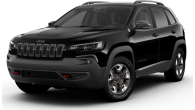
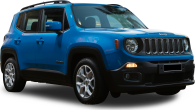














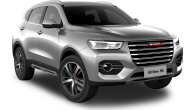

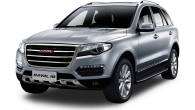



 copy.png)

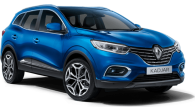




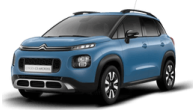








.jpg)
.jpg)
.jpg)
.jpg)



.jpg)
.jpg)
Comments